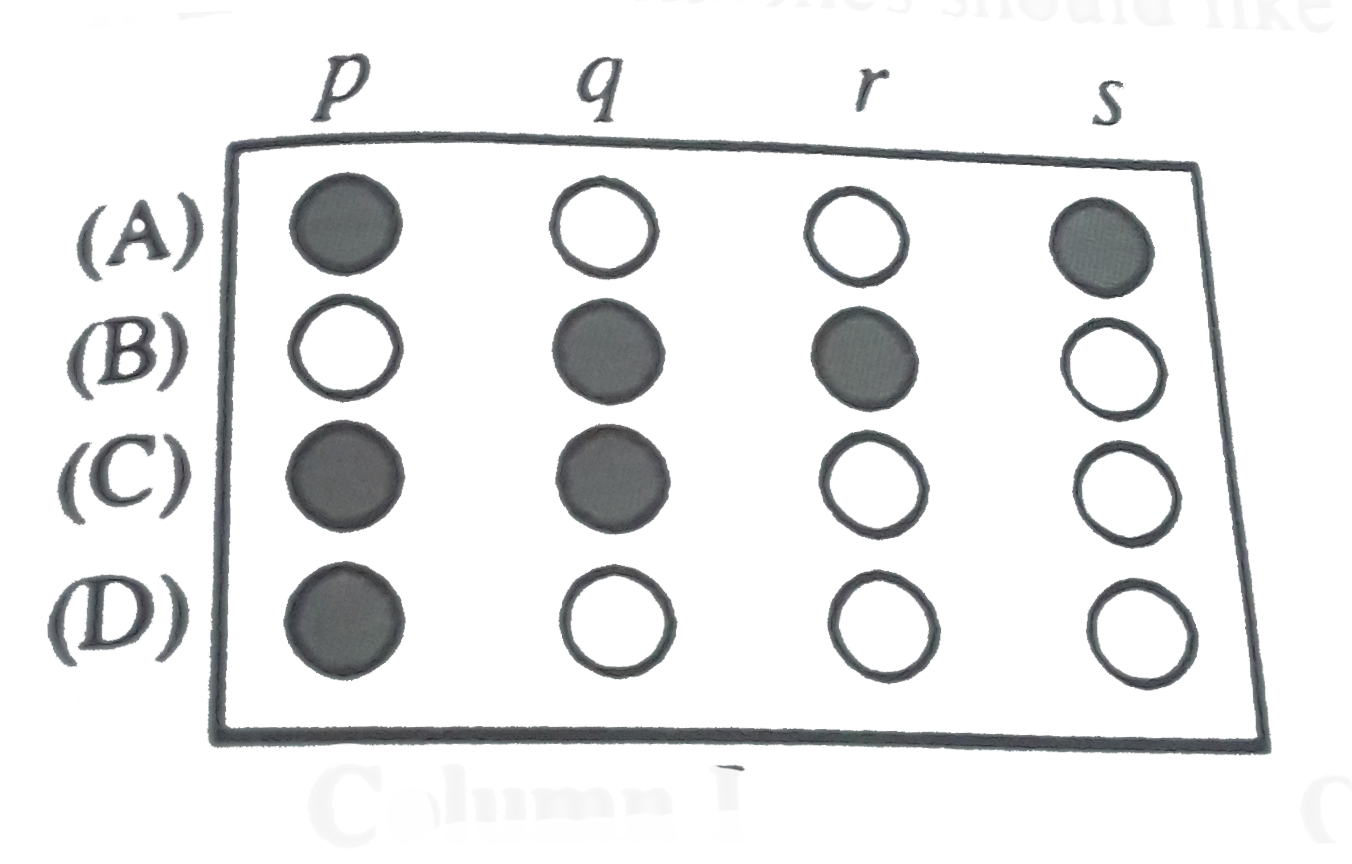Match the following :
Column I(Group)Column II(Directive influence)(a)−NO2(p) meta directing(b)−CI(q)o-and p-directing(c)−CH3(r) Activating(d)−NH2(s) Deactivating
The correct Answer is:(a−p,s);(b−q,s);(c−q,r);(d−q,r)
Step by step video, text & image solution for Match the following : {:(underset(("Group"))("Column I"), underset(("Directive influence"))("Column II")),((a) -NO_(2),"(p) meta directing"),((b)-CI,"(q)o-and p-directing"),((c)-CH_(3),"(r) Activating"),((d)-NH_(2),"(s) Deactivating"):} by Chemistry experts to help you in doubts & scoring excellent marks in Class 11 exams.
Updated on:21/07/2023Similar Questions
Match the column I and II (Matrix)
Column IColumn II(a)−NO2(p)m effect(b)−O−(q)+m effect(c)−O−CH3(r)−I effect(d)−C≡N(s)−Ieffect
View SolutionMatch the column
Column I(Compound)Column II(Characteristic property)(A). Amylose(P). Polysaccharide(B). Cellulose(Q). α−Glycosidic linkage(C). Maltose(R). β−Glycosidic linkage(D). Galactose(S). Hydrolysed to glucose
View SolutionMatch the column
Column I(Carbohydrate)Column II(Properties)(A). Starch(P). Mutarotation(B). Sucrose(Q). Non reducing sugar(C). Lactose(R). β−glycosidic bond(D). Maltose(S). α−glycosidic bond(T). Reducing sugar(U). Hemiacetal
View SolutionMatch the following :
Column IColumn II(a)CH6H5CHO(p)Haloform reaction(b)HCHO(q)Fehling's solution(c)CH3CHO(r)Cannizzaro reaction(d)CH3−CO−CH3(s)Knoevenagel reaction
View SolutionColumn-IColumn−II(Oxidation sate of N)(a)NO(p)+5(b)NO2(q)+3(c)NO–2(r)+4(d)NO–3(s)+2
View SolutionMatch the column
Column I(Carbohydrates)Column II(Type)(A). Glucose(P). Monosaccharide(B). Sucrose(Q). Oligosaccharide(C). Maltose(R). Polysaccharide(D). Glycogen
View SolutionMatch the column
Column I(Compounds)Column II(Reagents used to differentiate)(A). Glucose/Fructose(P). Br2 water(B). Glucose/Sucrose(Q). Fehling's solution(C). Fructose/Sucrose(R). Tollen's reagent
View SolutionMatch the column
Column I(Reaction)Column II(Number of functional group in product)(A). GlucoseHI−−→(P). 2(B). GlucoseBr2water−−−−→(Q). 3(C). GlucoseHCN−−→(R). 0(D). GlucoseCH3−O∣∣C−O−O∣∣C−CH3−−−−−−−−−−−−−−→(excess)(E). GlucoseHNO3−−−→
View SolutionMatch the column
Column I(Compound)Column II(Relatioship)(A). α−D−Glucose and β−D−Glucose(P). Functional group isomer(B). Glucose and Mannose(Q). Anomer(C). Glucose and Fructose(R). Epimer(D). α−D−Fructo Furanose and β−D−Fructo Furanose
View SolutionHere each question contains statements given in two column which have to be matched. Statements in columns I are labelled as A, B, C and D where as the statements in column II are labelled p, q, r and s. The answers to these questions are to be appropriately bubbled as illustrated in the following example.
If the correct matches should like the following.

Column IColumn II(A)SO2(p)Basic(B)H2SO4(q)Acidic(C)HNO3(r)Reducing(D)NH3(s)Oxidizing
View Solution

